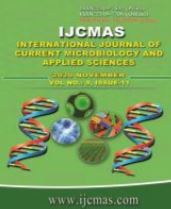


 National Academy of Agricultural Sciences (NAAS)
National Academy of Agricultural Sciences (NAAS)

|
PRINT ISSN : 2319-7692
Online ISSN : 2319-7706 Issues : 12 per year Publisher : Excellent Publishers Email : editorijcmas@gmail.com / submit@ijcmas.com Editor-in-chief: Dr.M.Prakash Index Copernicus ICV 2018: 95.39 NAAS RATING 2020: 5.38 |
The genus Avena is very large and highly diverse and contains both wild and cultivated species of polyploidy series with a basic chromosome number of n = 7. Preservation of plant genetic resources is an essential tool for securing them for diverse utilisation in the future. They include commercial plant varieties (both currently available and those developed in the past) as well as traditional local plant varieties, landraces, wild material and breeding lines. The genetic base from which many of our present day varieties have been derived is quite narrow and frequently, pedigrees trace back to varieties. It has recently been demonstrated that allelic diversity at particular loci, rather than average genetic diversity, is sensitive to oat breeding practices. Base broadening of the present cultivated gene pool by introducing novel germplasm is becoming increasingly important and can be achieved in a number of different ways. Incorporation of exotic germplasm is the best means to enhance the genetic base of oat crop substantially with desirable grain quality and fodder yield. Various developments, including the introduction of intellectual property rights (IPR), have changed the ways in which plant genetic resources (PGR)are utilized by agriculture on a global basis. Now the whole scenario of this crop is changed because of highly nutritious for human consumption. To work hard in this crop, exploitation of genetic resources, wild relatives and innovative techniques for improvement of this crop for fodder as well as for human consumption.
 |
 |
 |
 |
 |